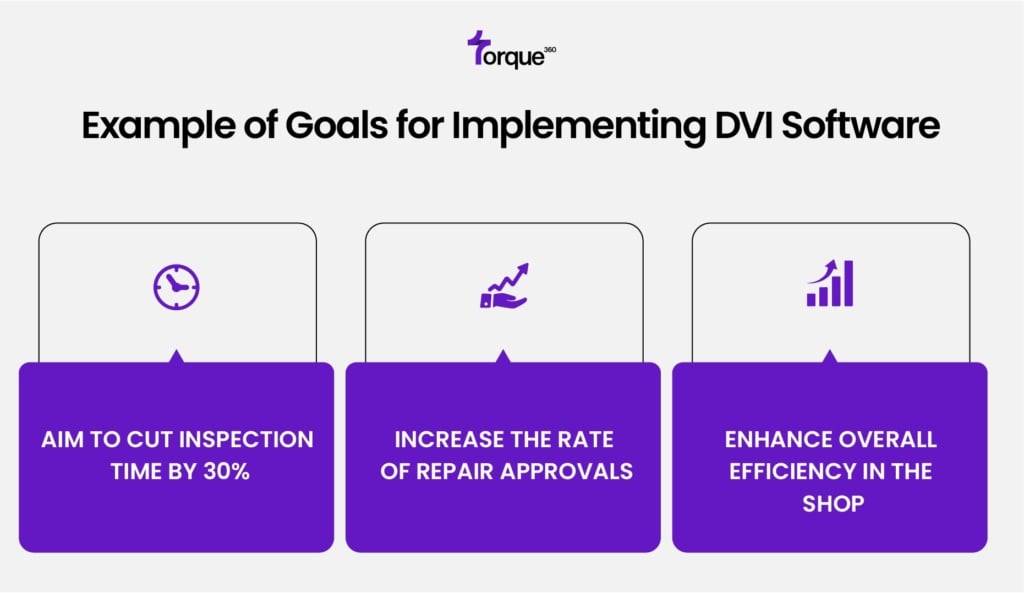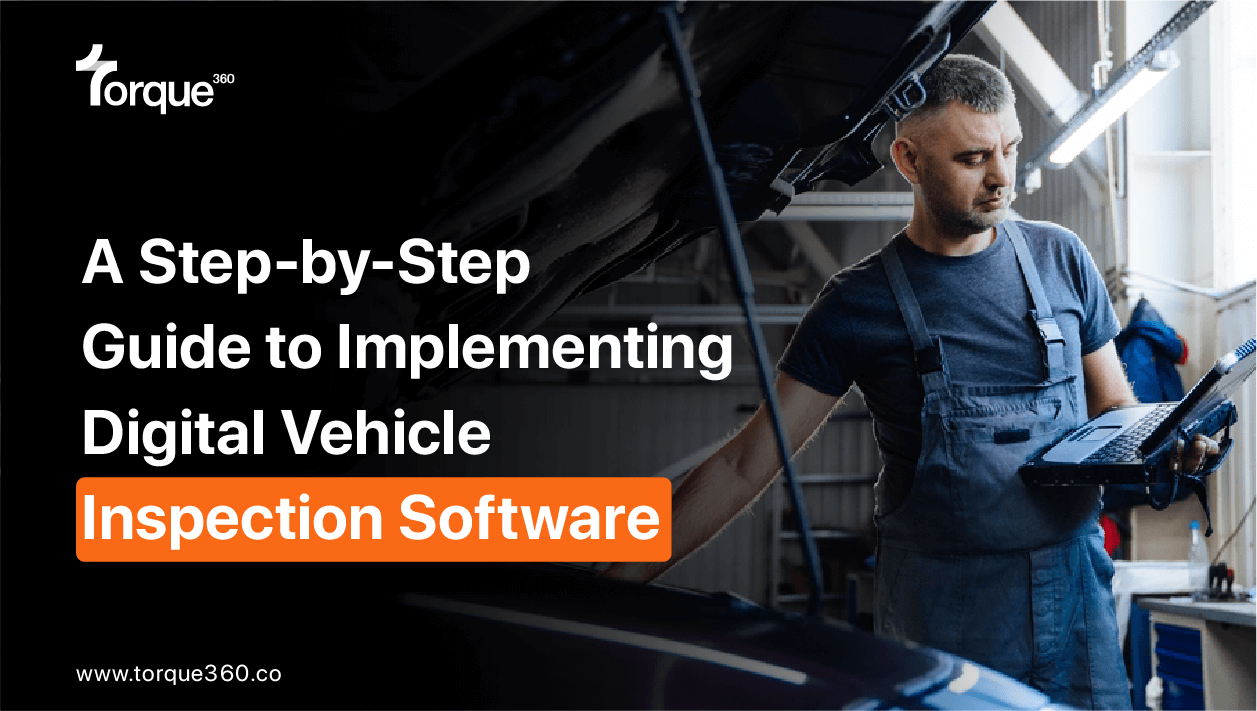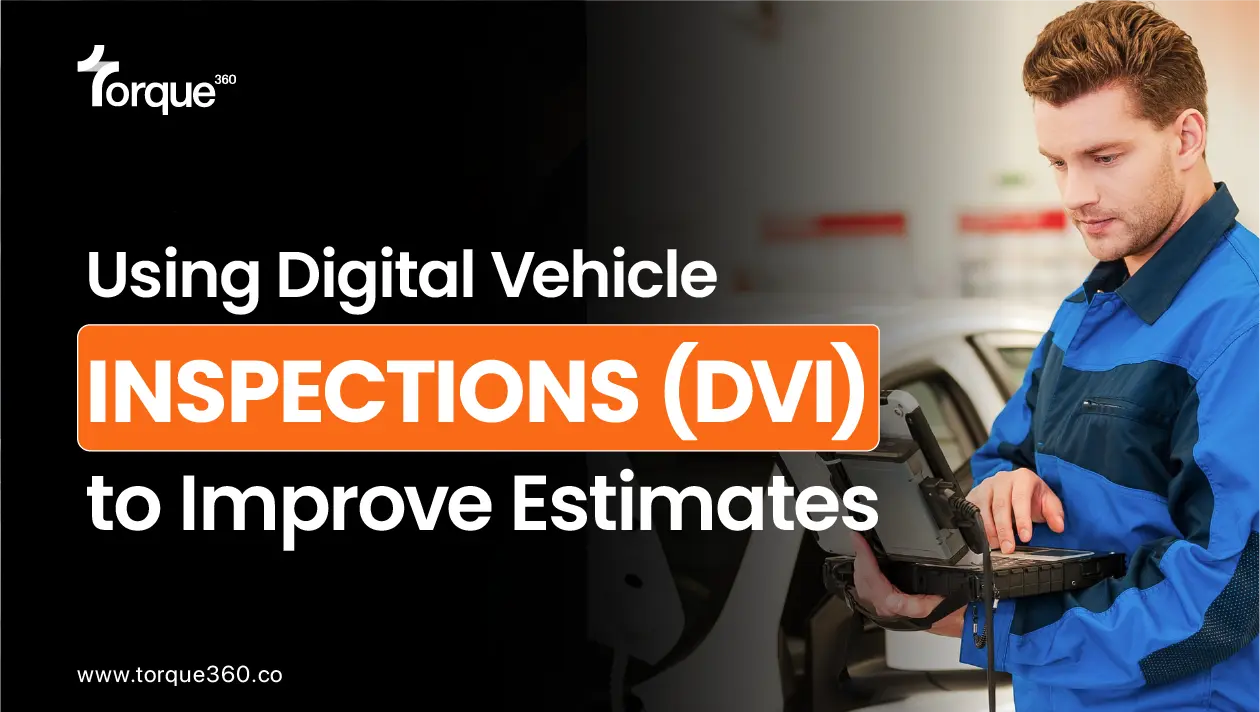Have you ever wondered how modern auto repair shops keep up with the growing demand for fast and accurate vehicle inspections? The answer lies in digital vehicle inspection software, a powerful tool streamlining the entire process.
In this guide, we’ll walk you through each step of implementing software, making it easy for your shop to embrace this technology and improve efficiency, accuracy, and customer satisfaction.
Want to enhance the vehicle inspection process? Book a demo now!
Understanding Digital Vehicle Inspection Software
DVI software is a modern tool that helps auto repair shops check cars more efficiently and accurately. This software makes it easy to capture details, photos, and even videos of any issues with the vehicle. All this information is then shared with the customer clearly and understandably.
According to Open PR, the United States DVI Software market should grow from US$ million in 2022 to US$ million by 2029, with a CAGR of % from 2023 to 2029.
Key Features and Benefits of Software
DVI software offers several key features that benefit auto repair shops, customers, and mechanics.
Streamlining the Inspection Process
| Feature | Description |
| Streamlines Process | DVI software simplifies inspections with just a few taps on a screen. |
| Quick and Efficient | Mechanics can complete inspections rapidly. |
| Pre-set Checklists | Ensures every part of the vehicle is noticed. |
Enhancing Accuracy and Transparency
| Feature | Description |
| Ensures Accuracy | DVI software helps mechanics be precise in vehicle inspections. |
| Reduces Mistakes | Digital entry minimizes errors compared to handwritten notes. |
| Includes Photos and Videos | Enhances transparency by showing customers exactly what the mechanic sees. |
Improving Customer Communication
| Feature | Description |
| Enhances Communication | DVI software improves how shops communicate with customers. |
| Improves Understanding | Visual information helps customers better grasp their vehicle’s condition. |
| Increases Repair Approvals | Detailed reports make customers more likely to approve necessary repairs. |
Increasing Shop Efficiency and Revenue
| Feature | Description |
| Focus on Repairs | Mechanics can devote more time to actual repairs. |
| Increases Daily Service Capacity | More cars serviced daily leads to higher revenue. |
| Boosts Income | Increased repair approvals further increase the shop’s income. |
Assessing Your Shop’s Needs
Examining your shop’s current processes and challenges is essential before implementing software. Here’s how to assess your shop’s needs effectively.
Evaluating Current Inspection Processes
- Assess how vehicle inspections are currently conducted.
- Determine if inspections are uniform or vary between mechanics.
- Recognize specific challenges your team faces.
Determining the Specific Needs of Your Shop
- Recognize the shortcomings in your current inspection process.
- Consider what improvements are desired, such as:
- Need for quicker inspections
- Improved documentation of issues
- Enhanced interaction with customers
- Compatibility with existing systems
Identifying Goals
- Establish objectives for using DVI software.
- Use goals to measure the software’s success in your shop.
- Set measurable goals to monitor the software’s effectiveness and ensure it meets your expectations.
Examples of Goals

Key Factors to Consider When Choosing Software
Several vital factors should be considered when selecting software to ensure you pick the best option for your shop. These factors will help you find software that fits your current needs and supports your growth in the long run.
According to Yahoo Finance, the United States represents the largest regional market for Digital Inspection, accounting for an estimated 26.5% share of the global total.
User-Friendliness
| Aspect | Description |
| Consider User-Friendliness | Ensure the software is easy for mechanics and customers. |
| Avoid Complexity | Complicated software can slow down the team and frustrate customers. |
| Facilitate Quick Learning | The software should be easy for staff to learn quickly. |
Integration with Existing Systems
| Aspect | Description |
| Evaluate Integration | Assess how well the software connects with your existing systems. |
| Seamless Connectivity | Ensure the software integrates smoothly with your shop management tools and other systems. |
| Avoid Disruptions | Integration should prevent disruptions in your workflow. |
Customer Support and Training
| Aspect | Description |
| Ensure Reliable Support | Choose a provider with dependable customer support and training. |
| Comprehensive Training | Consider thorough training to help your team quickly learn the software. |
| Ongoing Support | Confirm that ongoing assistance is available for any issues or questions. |
Cost and Pricing Structure
| Aspect | Description |
| Consider Cost | Evaluate the cost of investing in new software. |
| Compare Providers | Analyze the pricing structures of various providers. |
| Find the Best Value | Choose a solution that fits your budget while offering essential features. |
Comparing DVI Software
| Aspect | Description |
| Read Reviews | Check reviews to gauge user experiences. |
| Seek Recommendations | Ask other shop owners for their suggestions. |
| Request Demos | Get hands-on experience with the software through demos. |
Step-by-Step Implementation Process
Implementing software in your auto repair shop significantly improves efficiency and customer service. Here’s a step-by-step guide to help you smoothly implement inspection software in your shop.
Installing and Configuring the Software
- Install and set up inspection tools.
- Create accounts for your team members.
- Adjust settings to align with your shop’s requirements.
Integrating Software with Existing Systems
- Connect the software with your current tools.
- Ensure data is consistent across all systems.
- Proper integration helps minimize mistakes.
Training Staff on Using the Software Effectively
- Begin training your team on the new software.
- Include practical sessions to help staff familiarize themselves with the software.
- Allow staff to ask questions for clarity.
Running a Pilot Test and Gathering Feedback
- Conduct a trial run of the software before the full rollout.
- Observe how well the software fits with current processes.
- Note any problems or areas needing improvement.
- Use feedback to make necessary adjustments.
Troubleshooting Common Challenges
It’s essential to be prepared to address issues effectively, from technical glitches to staff resistance. Here’s how to troubleshoot common challenges during and after the implementation process.
Common Problems
| Issue | Description |
| Syncing Issues | Software may not sync properly with other systems. |
| Performance Problems | Slow performance or lag. |
| Customization Difficulties | Challenges in customizing features. |
Post-Implementation Issues
| Issues | Description |
| Incomplete Data Entries | Data accuracy needs to be improved. |
| Report Generation Difficulties | Problems creating reports. |
| Troubleshoot and Resolve | Use support to address and fix technical issues quickly. |
Tips for Overcoming Resistance from Staff
Introducing software may require more support from staff accustomed to previous methods.
- Recognize staff concerns about the change.
- Clearly explain how the new system will make their work more efficient.
- Offer detailed training to help staff learn the software.
- Allow time for staff to adapt to the new system.
Conclusion
Implementing digital vehicle inspection software can revolutionize your auto repair shop. While choosing and integrating the right software might seem daunting, following the steps outlined in this guide will help you navigate the journey smoothly.
This guide equips you with the knowledge and tools needed to succeed, from understanding the benefits of software to addressing everyday challenges. With the right approach, software can enhance your shop’s efficiency and build stronger customer relationships.
FAQs
What initial steps should I take before implementing digital vehicle inspection software in my shop?
Before implementation, assess your shop’s current inspection processes and identify any challenges you face. Determine your specific needs and set clear goals for what you want the software to achieve.
What factors should I consider when selecting digital vehicle inspection software?
When choosing software, consider user-friendliness to ensure it’s easy for your team to learn and use, integration capabilities to ensure it works with your existing systems, and the quality of customer support and training provided.





